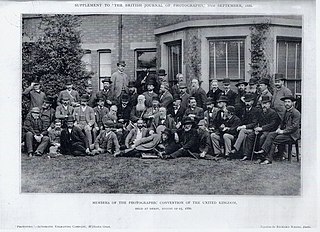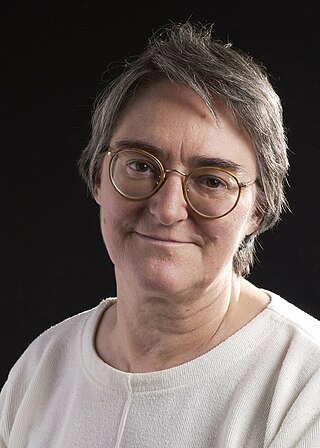
Photojournalism is journalism that uses images to tell a news story. It usually only refers to still images, but can also refer to video used in broadcast journalism. Photojournalism is distinguished from other close branches of photography by having a rigid ethical framework which demands an honest but impartial approach that tells a story in strictly journalistic terms. Photojournalists contribute to the news media, and help communities connect with one other. They must be well-informed and knowledgeable, and are able to deliver news in a creative manner that is both informative and entertaining.

The Brooks Institute was a private for-profit art school in Ventura, California. It was formerly the Brooks Institute of Photography and was originally based in Montecito and Santa Barbara.

Henry Peach Robinson was an English pictorialist photographer best known for his pioneering combination printing - joining multiple negatives or prints to form a single image; an early example of photomontage. He joined vigorously in contemporary debates in the photographic press and associations about the legitimacy of 'art photography' and in particular the combining of separate images into one.

Wedding photography is a specialty in photography that is primarily focused on the photography of events and activities relating to weddings. It may include other types of portrait photography of the couple before the official wedding day, such as a pre-wedding engagement session. On the wedding day, the photographer(s) will provide portrait photography as well as documentary photography to document the different wedding events and rituals throughout the wedding day(s).
The American Society of Media Photographers, abbreviated ASMP, is a professional association of imaging professionals, including photojournalists, architectural, underwater, food/culinary and advertising photographers as well as video/film makers and other specialists. Its members are primarily those who create images for publications, though many cross over into wedding and portrait photography.

The Royal Photographic Society of Great Britain, commonly known as the Royal Photographic Society (RPS), is one of the world's oldest photographic societies. It was founded in London, England, in 1853 as the Photographic Society of London with the objective of promoting the art and science of photography, and in 1853 received royal patronage from Queen Victoria and Prince Albert.

Gertrude Käsebier was an American photographer. She was known for her images of motherhood, her portraits of Native Americans, and her promotion of photography as a career for women.

Valentine Blanchard was a prominent English photographer who was widely recognized for his artistic and technical contributions to photography in the 1860s. Both his landscape and his portrait photography were highly valued by the public, commanding high prices and selling well. He was much appreciated by his peers for the technical innovations he pioneered in photographic processes.
Tim Flach is a British photographer who specialises in studio photography of animals. He has published several books of photographs.

The Photographic Convention of United Kingdom (PCUK) was founded in 1886 and held its first convention in the city of Derby, England, in August of that year.

The Federation of European Professional Photographers or Federation of European Photographers (FEP) is a nonprofit organization that organizes national professional photographers associations in the geographic area represented by the Council of Europe and has member organizations in some 29 countries. FEP is officially headquartered in Brussels. The Secretariat is in Rome. As the central reference authority for Photography in the European Union, it represents over 50.000 professional photographers in Europe.
The practice of photography in Korea was delayed until the late 19th century, because of the Joseon Dynasty's policy forbidding contact with foreigners.

Jan Pohribný is a Czech photographer.

Paul Reiffer is a British commercial and landscape photographer.
The Defence School of Photography (DSoP) is a training centre for all photographers drawn from the three arms of the British Military and the Civil Service. The School has been located at RAF Cosford in Shropshire, England since 1963 and in its own purpose built building at Cosford since 1965. The school has gone through several iterations being firstly a Royal Flying Corps school, then a Royal Air Force School, then a Joint school before becoming the DSoP in 2003.

Julie Dorrington, aclinical photographer, was one of the founder members of the Institute of Medical Illustrators.
Souk El Hboub is one of the oldest souks of the medina of Sfax, more specifically the souks of Bab Jebli.
Photography, as a branch of science, technology and art, developed in Ukraine in different ways, as historically lands were divided between two empires: Russia and Austria. This has led to some differences in the goals of photographic societies and in the technological and social role of photography in Ukraine.

Photographs have been taken in the area now known as Canada since 1839, by both amateurs and professionals. In the 19th century, commercial photography focussed on portraiture. But professional photographers were also involved in political and anthropological projects: they were brought along on expeditions to Western Canada and were engaged to document Indigenous peoples in Canada by government agencies.












